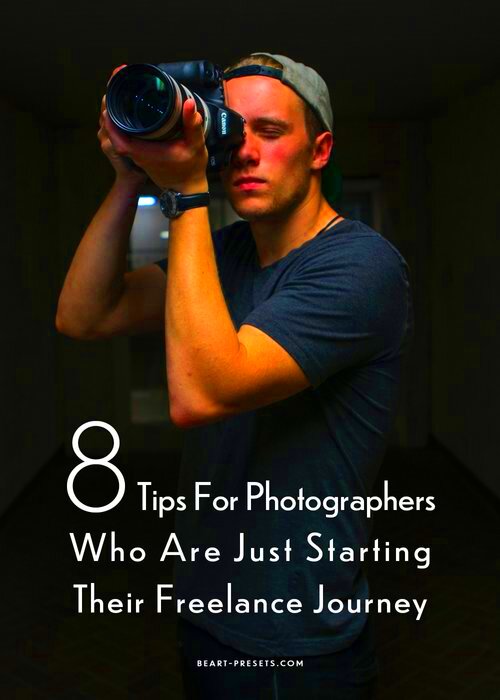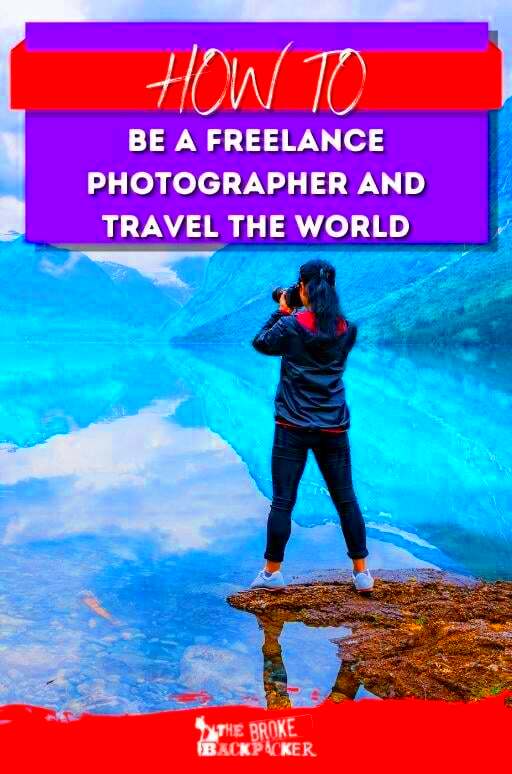Freelance travel photography is an exciting career that allows you to combine your passion for photography with a love for exploring the world. As a freelance travel photographer, you have the freedom to work on your terms, choosing the locations, clients, and projects that interest you most. Whether you're capturing stunning landscapes, vibrant street scenes, or unique cultural moments, the opportunities are endless. The best part? You get to share the beauty of the world through your lens while building a career that’s flexible and fulfilling.
Understanding the Role of a Travel Photographer

As a travel photographer, your primary job is to document the places, people, and experiences that make each destination unique. This involves more than just taking beautiful pictures – it’s about telling stories through your images. A travel photographer captures moments that convey emotion, culture, and the essence of a location. Here’s what the role typically involves:
- Photographing diverse landscapes and scenes: From towering mountains to bustling city streets, your job is to capture the essence of the environment.
- Building relationships with locals: A travel photographer often needs to interact with locals to understand their culture and gain permission to photograph them.
- Adapting to different lighting and weather conditions: Travel photographers need to be ready for any situation, from sunny days to overcast skies or nighttime shots.
- Editing and curating images: After the shoot, editing and selecting the right shots to represent the place or moment is an essential part of the process.
Also Read This: How to Create a Hyperlink in Your Fiverr Account
Essential Equipment for Travel Photography

The right equipment can make or break a travel photographer’s work. While you don’t need to carry every gadget available, there are a few key pieces of gear that are essential for capturing high-quality images on the go:
- Camera Body: A DSLR or mirrorless camera is ideal for travel photography due to its versatility, image quality, and interchangeable lenses.
- Lenses: A range of lenses will allow you to adapt to different environments. A wide-angle lens is perfect for landscapes, while a 50mm lens is great for portraits and low-light conditions.
- Tripod: A sturdy tripod is essential for long exposure shots, low-light conditions, or shooting at sunrise or sunset.
- Extra Memory Cards and Batteries: You never know when you’ll need a backup, so carry plenty of spare memory cards and batteries to avoid running out of storage or power.
- Camera Bag: A durable, weatherproof camera bag will help you carry your gear safely while protecting it from the elements.
- Filters: Polarizer filters can help reduce glare and enhance colors, while ND filters are useful for controlling light exposure in bright conditions.
Along with these essentials, a laptop for photo editing and an external hard drive for backups are also good investments to keep your work organized and safe.
Also Read This: Why Are So Many Fiverr Designers in Pakistan?
Building Your Portfolio as a Freelance Travel Photographer

Building a strong portfolio is one of the most important steps in starting your career as a freelance travel photographer. Your portfolio serves as your visual resume, showcasing your style, skills, and the diversity of your work. It's essential to make a great first impression and show potential clients what you’re capable of. Here’s how to build an effective portfolio:
- Choose your best work: Quality is more important than quantity. Only showcase your best photos that reflect your unique perspective and abilities.
- Highlight diversity: Show a range of subjects, locations, and photography styles. A varied portfolio will appeal to a wider audience and demonstrate your adaptability.
- Tell stories: Photography is all about storytelling. Each image should convey an emotion or message. Include a few captions to give context to your photos.
- Include both wide shots and details: Show both the grand landscapes and the intimate details that make each location special.
- Make your portfolio accessible: Create an online portfolio, whether through a personal website or platforms like Instagram or Behance. Ensure your website is easy to navigate and mobile-friendly.
- Update regularly: Keep your portfolio fresh by updating it with new work. This keeps your content relevant and shows your growth as a photographer.
Remember, your portfolio is your calling card. It’s a reflection of your work and your vision, so take the time to make it memorable and professional.
Also Read This: How to Highlight Text in Fiverr
Marketing Yourself as a Travel Photographer
Marketing yourself as a freelance travel photographer can feel like a challenge, but it’s essential for growing your career. With the right marketing strategies, you can attract clients, build your brand, and reach a global audience. Here are some effective ways to market yourself:
- Utilize social media: Platforms like Instagram, Facebook, and Pinterest are great for sharing your work and engaging with potential clients. Use relevant hashtags and post regularly to increase visibility.
- Start a blog or website: A blog is an excellent way to showcase your work, tell stories, and offer insights into your travels. Share behind-the-scenes content, photography tips, and travel experiences to connect with your audience.
- Collaborate with brands: Partnering with travel companies, tourism boards, and gear brands can help you expand your reach. Offer your photography in exchange for exposure or paid gigs.
- Networking: Attend travel and photography events, both online and in person. Networking with other photographers, industry professionals, and potential clients is a great way to grow your reputation.
- Offer print sales: Selling prints of your work is a great way to increase income and showcase your best images in homes and offices around the world.
- Use email marketing: Collect emails from interested followers or clients and send out newsletters with your latest work, travel tips, and special offers.
Marketing yourself requires consistency and creativity, but by using these strategies, you can effectively build your brand and attract the right audience.
Also Read This: What Does a Down Arrow Mean on Fiverr? Understanding the Symbol and Its Implications
Finding Your Niche in the Travel Photography Market
Finding your niche in travel photography is a key part of building a successful freelance career. It helps you stand out from the competition and attracts clients who are looking for a specific type of work. Here’s how to identify and develop your niche:
- Analyze your interests: Think about what excites you most about travel photography. Do you love photographing natural landscapes, cityscapes, wildlife, or portraits of people from different cultures? Your passion will shine through in your work.
- Consider your skills: What are your strengths as a photographer? Are you skilled at capturing dramatic landscapes, working in low light, or telling powerful stories through portraits? Focus on areas where you excel.
- Research the market: Explore the travel photography market and see where there are gaps. Maybe there’s a demand for adventure tourism photography or eco-conscious travel photos. Identifying trends can help you position yourself effectively.
- Experiment with different styles: Don’t be afraid to try different types of photography to discover what resonates with you. Take some time to experiment with documentary, lifestyle, or editorial photography to find the style that suits you best.
- Focus on a specific audience: Once you identify your niche, tailor your marketing to the people most likely to buy your work. Whether it’s tourism boards, travel magazines, or adventure companies, knowing your audience will help you target the right clients.
By finding and focusing on your niche, you can develop a unique style that sets you apart and attracts the right opportunities in the travel photography market.
Also Read This: Can I Pay Fiverr with AMEX Credit Card?
How to Price Your Photography Services
Pricing your photography services can be challenging, but it’s a crucial part of being a successful freelance photographer. Setting the right rates helps you value your work and ensures you’re compensated fairly for your time and expertise. Here’s how to approach pricing your photography services:
- Understand your costs: Before setting your prices, calculate your expenses. This includes the cost of equipment, travel, editing software, marketing, and insurance. You need to cover these costs and make a profit.
- Know your worth: Your experience, skill level, and the quality of your work should influence your pricing. If you’re just starting, you may offer lower rates to build your portfolio. As you gain experience, you can increase your rates.
- Consider your audience: Who are your clients? If you’re working with high-end travel agencies, your pricing will likely be higher than if you’re shooting for smaller, local businesses. Understand your target market and adjust accordingly.
- Offer packages: Instead of just charging an hourly rate, consider offering photography packages. This could include a set number of images, travel time, and editing services. Packages can make your pricing more transparent and easier for clients to understand.
- Check industry standards: Research the going rates for travel photographers in your area or niche. While you shouldn’t necessarily match competitors’ prices, it’s helpful to know what’s typical in the industry.
Pricing is an ongoing process that will evolve as your business grows. Be open to adjusting your rates based on demand, your experience, and market trends.
Also Read This: Average Annual Earnings of Freelance Writers
Managing Your Freelance Photography Business
Running a freelance photography business requires more than just taking great photos. You need to manage your time, finances, and client relationships effectively to stay on top of your career. Here are some tips for managing your freelance photography business:
- Set clear goals: Determine both short-term and long-term goals for your business. Whether it’s expanding your portfolio, increasing your client base, or achieving a specific income level, setting goals helps you stay focused and motivated.
- Stay organized: Keep track of your projects, deadlines, invoices, and expenses. Tools like Trello, Asana, or even Google Sheets can help you stay on top of everything. Consider using accounting software like QuickBooks or FreshBooks to handle your finances.
- Manage client relationships: Communication is key. Always be clear about timelines, deliverables, and expectations. Consider using contracts to formalize your agreements and protect both you and your clients.
- Budget your finances: Freelance photographers often deal with irregular income, so it's essential to have a budget. Set aside money for taxes, business expenses, and savings. Planning for slow months will help keep your finances stable.
- Invest in your growth: Continuously improve your skills and stay updated on photography trends. Attend workshops, invest in new gear, or experiment with different photography styles to keep your business evolving.
- Time management: Freelance work often comes with flexible hours, but that can lead to procrastination. Set a schedule that includes time for shooting, editing, marketing, and personal life. Balancing all of these aspects is key to staying productive.
By managing the business side of things effectively, you can ensure long-term success and avoid burnout in your freelance photography career.
Also Read This: How Does Fiverr Pay Sellers?
Frequently Asked Questions
As a freelance travel photographer, you may have many questions about starting and growing your career. Here are some common questions that can help you navigate the industry:
- Do I need a degree to become a travel photographer? No, you don’t need a formal degree in photography, but a good understanding of photography techniques and a strong portfolio are essential. You can also take online courses or attend workshops to improve your skills.
- How can I get paid as a freelance photographer? Freelance photographers can earn money through various avenues, including client commissions, selling prints, licensing photos, and collaborating with brands. Having multiple income streams is a good way to stabilize your earnings.
- Do I need to travel a lot to be a travel photographer? While traveling frequently can help you capture diverse content, you don’t always have to be on the move. You can build a travel photography portfolio by photographing local destinations and working with travel-related businesses.
- What are the best places to sell travel photos? You can sell your travel photos on stock photo websites like Shutterstock, Adobe Stock, or Getty Images. You can also sell prints through your own website or platforms like Etsy.
- How do I deal with difficult clients? To prevent issues with clients, always have clear contracts in place and communicate expectations from the start. If problems arise, handle them professionally, and try to find a solution that works for both parties.
- How do I handle the business side of photography? As a freelancer, it’s essential to manage your finances, time, and client relations. Use software for invoicing, budgeting, and project management to stay organized. Also, always have contracts in place to protect yourself legally.
These FAQs provide a foundation for getting started and understanding common challenges in freelance travel photography. Remember, as you gain experience, you’ll continue to learn and adapt to the industry.
Conclusion: Starting Your Freelance Travel Photography Career
Starting your freelance travel photography career can be both exciting and challenging. As you embark on this journey, remember that success won’t happen overnight, but with dedication, continuous learning, and a strong portfolio, you can build a fulfilling career. The key to success lies in understanding your worth, marketing yourself effectively, and managing your business efficiently. It’s essential to stay patient and persistent while continuously improving your skills and expanding your network.
To sum it up, here are the steps to kickstart your freelance travel photography career:
- Build a strong portfolio: Make sure your portfolio showcases your best work and reflects your unique style as a travel photographer.
- Set your pricing: Understand the costs involved and know your worth to set fair and competitive rates.
- Market yourself: Use social media, a personal website, and networking to get your work in front of the right audience.
- Stay organized: Managing your time, finances, and client relationships is crucial for a successful freelance business.
- Find your niche: Specialize in a type of travel photography that you’re passionate about and that stands out in the market.
With these steps, you’ll be on your way to establishing yourself as a successful freelance travel photographer, enjoying the freedom to explore new places while doing what you love.




